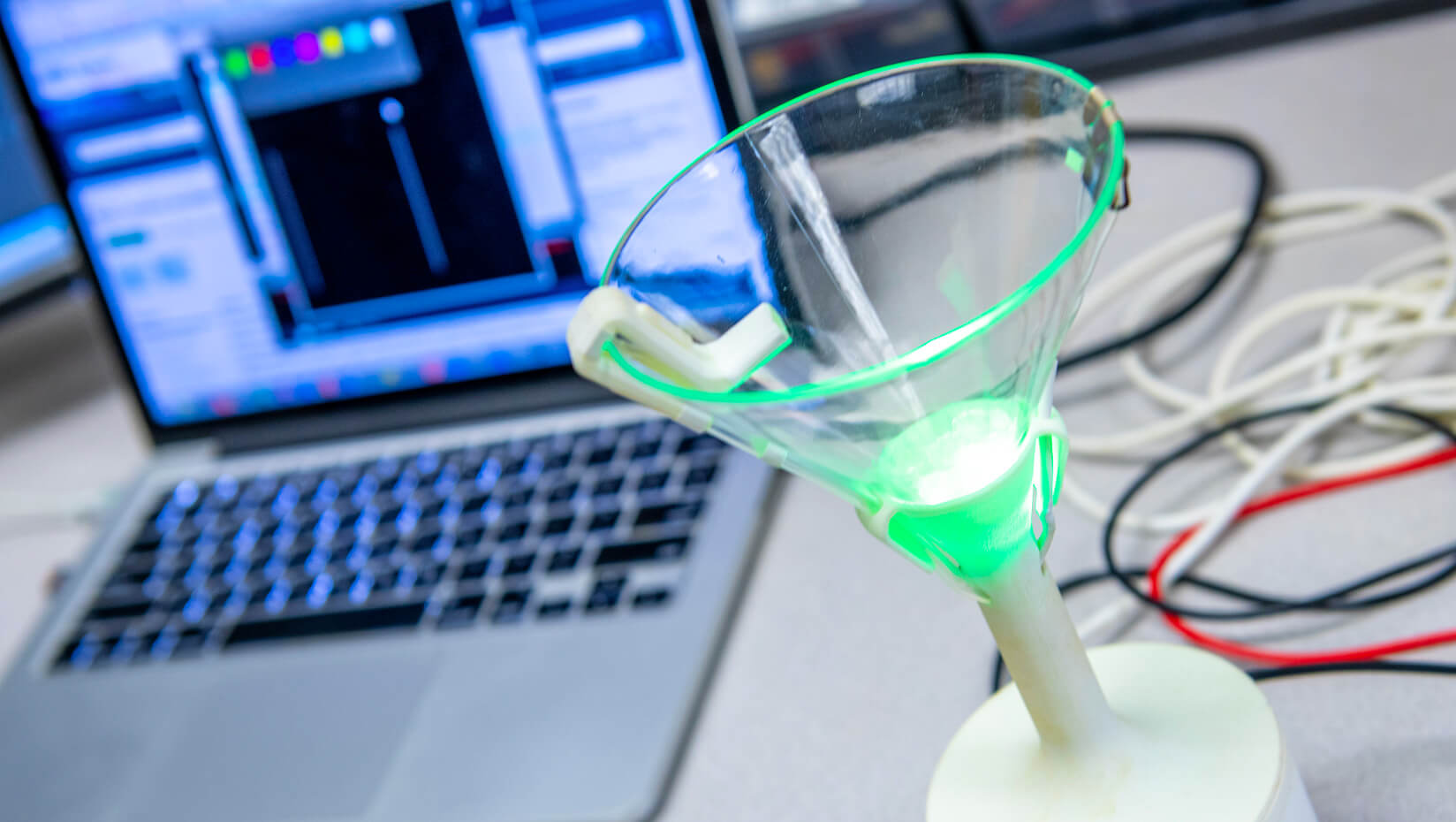
AR technology blending physical and virtual flavor perceptions in Ranasinghe’s invention
Imagine the ability to turn a plain glass of water into any kind of drink that suits your fancy, from lemonade to a cocktail, with the press of a button. Sound futuristic? The future is at the fingertips of Nimesha Ranasinghe, a new assistant professor in the School of Computing and Information Science at the University of Maine.
In his Multisensory Interactive Media Lab (MIM Lab) at UMaine, Ranasinghe explores virtual reality and augmented reality to build on technology he pioneered while earning a Ph.D. in electrical and computer engineering at the National University of Singapore. The latest invention he developed there is the Virtual Cocktail, or Vocktail.
Ranasinghe harnesses preconceived perceptions of color and taste to tap into memories and expectations surrounding food and drink, combining electricity, heat, color and smell to create a specific flavor experience.
With the Vocktail mobile app, users can select different elements to create easily recognizable — or entirely new — beverages. A pair of electrodes on the rim of a glass of water impart tiny, controlled electric pulses while the user drinks. The amplitude and frequency of the electric current can be changed to simulate saltiness or sourness based on the user’s perception of stimuli.
An LED light and other components contribute to other sensory variations, including aromas and colors, to create flavor.
“When you think about the flavor, it’s not just the taste sensations. It’s the color, it’s the smell, it’s even your previous memories associated with these flavors, as well as your ambient environment. So all these emotions, memories, experiences are associated with your flavor perception,” says Ranasinghe.
For example, the combination of a certain electric current to replicate sourness, yellow light and lemon smell can recreate the experience of drinking lemonade.
“I initially wanted to introduce the sense of taste as a digitally controllable media, so I started to play with electrical stimulation and thermal stimulation on the human tongue and to study how people perceive those stimuli as related to the primary taste sensations,” says Ranasinghe, who also has collaborated to create chopsticks and other utensils that transmit a sensation of salty or sour flavor through the use of electrodes.
Ranasinghe likens this avenue of virtual reality and augmented reality to “TV in the ’50s” — there are so many possibilities it’s difficult to decide where to start. His research focus is to broaden the knowledge of all the potential opportunities and applications for this technology, while continuing to innovate in beverage and culinary experiences, and seamlessly merge the virtual and physical worlds.
Jonathan Roman Bland, an electrical engineering technology student and research assistant in the MIM Lab, and Sofian Audry, an assistant professor of new media, are working on combining music and its associated experiences with the flavor experience of a beverage. They are building the testing platform to make it easier to simulate the different flavors and experiences along with a song.
“We’ll be able to make an experience that intertwines music with taste, smell and color into a cool experience,” says Bland.
Ranasinghe hopes his inventions will help people who are on diets restricting salt, sugar and other ingredients use this technology to enjoy the same flavors without worrying about health risks.
At UMaine, Ranasinghe also is affiliated with the Spatial Informatics program and the National Center for Geographic Information and Analysis (NCGIA), and has received numerous awards for his work, including recognition of the Digital Lollipop as one of the 10 best innovations in the world at the 2014 UNESCO netexplo forum.
Ranasinghe also is looking for student researchers from various disciplines including electrical engineering, computing, new media, psychology and others to work in the MIM Lab; if interested, contact r.ranasinghe@maine.edu.
Contact: Cleo Barker, 207.581.3729
